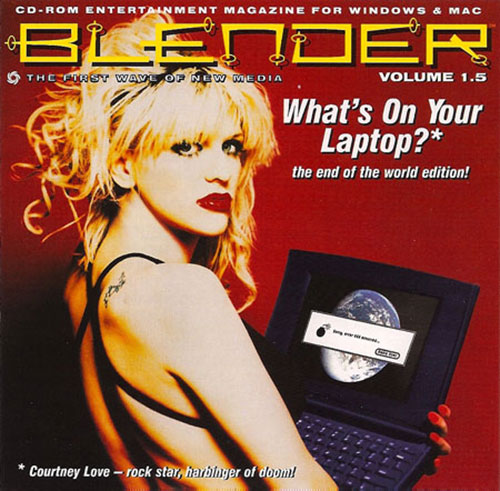
From a machine to send smells over the internet to a cartridge full of terrible games, some of the most terrible product ideas ever put into the market.
$20M
The amount that Digiscents, a tech company during the bubble era, had managed to raise for their product, iSmell, which—we kid you not—was a machine that could recreate smells and deliver them over the internet. It sounds like an absurd idea, but the company was able to get funding in part because its founders, Dexster Smith and Joel Bellenson, had recently gained fame because of their ties to DoubleTwist, a firm that helped work on the Human Genome Project.
Five people that have attempted to sell bottled water for pets
- "They're part of the family. I don't believe you scrimp on your family." — Bill Fels, a Seattle man who began selling "Pet Refresh," a brand of flavored water for dogs. It came in beef and chicken flavors.
- “It’s interesting to see different dogs react to the drink. They’ve never smelled anything like it in their water bowls and some will dive in and lap and lap and lap it up; others come to it a bit more tentative. ‘What’s this treat smell?’ they say. It’s kind of cute.” — Brian Fate, the creator of a dog-focused beverage called Dogdration, a peanut butter flavored drink that is laced with ginseng for some reason.
- "Research shows that many tap water sources contain levels of chlorine and fluoride that can be harmful to your pets. That's why we created Molli's Choice. It's a fun, healthful product line that even the most finicky pets will enjoy and benefit from." — Tomas Malave, the CEO and founder of Mollibrands, discussing the creation of his flavored water for pets, which he apparently developed with the help of food laboratories.
- "Once you give people more than water to drink, they do. Why shouldn't pets have that option, too?" — Marc Duke, the creator of the Thirsty Dog and Thirsty Cat bottled beverages, attempting to create a market for flavored bottled water for cats and dogs.
- "The biggest challenge we faced was the smell. Smell is key, in particular with cats. They are very finicky." — Dr. George Hill, discussing the research he undertook when attempting to launch his namesake Pet Drinks.
“Whoopi said to me on the set when we were shooting, ‘Robert, you’ve got to make me rich.’ So I said, ‘But Whoopi you’re already rich,’ and she said ‘No, Robert—really rich.’”
— Robert Levitan, the CEO and founder of Flooz, discussing the deal Levitan brokered with Whoopi Goldberg to convince her to do a TV ad for his product, which essentially was an early effort at internet-only currency, but closer in style to frequent flyer miles than Bitcoin. Goldberg didn't accept money for the ads she did for Flooz, asking only to be paid in stock. This proved to be a particularly bad idea after Flooz went under due in part to the currency being a popular target for use in fraudulent purchases. Where's Satoshi Nakamoto when you need him?

Action 52: A Perfect Example of Why Nintendo Licensed Developers
The nice thing about video games is that, no matter how good or bad they are, there's always a cult audience ready to tell you every possible detail about that game.
Action 52, the unlicensed Nintendo Entertainment System and Sega Genesis title, is a perfect example of this idea in action. The brainchild of a guy named Vince Perri, the game made a bold promise: You could get 52 original games in a single cartridge, ensuring that you'd never again have to spend $50 on a single game.
Perri is said to have had the idea after witnessing his 9-year-old son play a pirated multi-cart from Taiwan, a device that had numerous titles installed.
"I happened to see my son playing an illegal product made in Taiwan that had 40 games on it. The whole neighborhood went crazy over it," Perri said, according to a Miami Herald article from 1993, dutifully reproduced by CheetahmenGames.com. "I figured I'd do it legally. It's obvious when you see something like that, you know there's something there."
There was one obvious problem with this line of logic: he didn't have 52 games to sell. So he hired a couple of developers to make them for him. They didn't have much in the way of time or money, and while it's entirely possible they had talent, the lack of time or money ensured the talent would be hard to find.
Perri made the ultimate mistake that one could make when creating an original product—he mistook quantity for quality. But Perri was able to get a variety of investors to buy into his idea, ensuring that the idea had enough funding to go to market (at a price of $199, or as they liked to put it, $4 per game), but he skimped out on the only thing gamers really care about—the actual games.
"Action 52 is just plain ugly, with Cheetahmen and Billy Bob being the only two games out of 52 to contain adequate artwork and visuals," Hardcore Gaming 101 wrote of the final result in a review. "Some games are little more than a mess of pixels, but for most of them, they look like something you'd find in the margins of an eight year old's math notebook. There's also practically nothing in the way of animation, and backgrounds are extremely repetitive."
A developer who worked on the project, going by the anonymous name of "Action 52 Developer #4," explained that they were basically up against the wall trying to build numerous video games in a minimal amount of time.
"That's right, 4 guys, 3 months, 52 games, no pressure. And, no money," the developer wrote. "That's until I talked the guys into letting me ask Vince for some kind of advance. I don't recall the exact number, maybe $1,500. And that's all I ever got paid for those long hours spent on this project."
The most prominent game on the multi-pack was Cheetahmen, which Perri hoped to franchise and turn into a series of hit toys
There are all sorts of stories about the games, Perri, and Action Enterprises flying around. Among them: that the developers of the game ripped off the code of a pirate cart and recoded it for their own needs; that Perri had $20 million at his disposal, but spent less than $100,000 on the game itself; that more than 1,500 copies of a Cheetahmen sequel were sold at a Florida warehouse for a dollar each in 1996; and, most embarrassingly, the vaporware system that the company announced at the Consumer Electronics Show in 1994.

That system was supposed to be able to play NES, Sega Genesis and Super NES games, and included both a built-in LCD screen and a built-in CD-ROM. It was the most obvious piece of vaporware ever created. The company, of course, disappeared without a trace soon after CES.

The Cult of Cheetahmen
But a funny thing happened on the way to obscurity for Action Enterprises: A YouTube celebrity named the Angry Video Game Nerd (birth name James Rolfe) took on Action 52 in a two-part episode. The first episode focused on the first 51 games on the cartridge (all of them were awful), while the second gave lots of hate and mockery to Cheetahmen.
"Out of 52, I'm sure we'll eventually find one that's decent … I hope," Rolfe says at one point in the first episode, only to soon learn that he was wrong.
Quickly, Action 52 became something of the video game version of my favorite movie, The Room. (Congrats on your Academy Award nominations, Tommy! Oh … wait.)
Sure, it's still awful, but people have sort of embraced the awfulness of both the concept and the the absurd backstory of its creation. In 2012, Rolfe even showed up in a Kickstarter video for Cheetahmen II, the unreleased sequel to the original game. (That whole situation drove some controversy over whether or not the Kickstarter's creator, Greg Pabich, was running a scam—but in the end, the results ended up being legit.)
Perhaps the most notable part of the Action 52 saga is the remake project that came about in 2010, when game developers pledged to remake each of the 52 games on the infamous cartridge, with the goal of making the games good (or at the very least, playable). So far, 23 such remakes have been completed.
The thing to remember about terrible product ideas is that there was likely a point at each of these products' creations where the idea seemed like a good one. For example, a device that create any scent you can think of is an innovative idea, if not a particularly useful one. The problem there was a lack of market research.
Each of the ideas listed above fell apart at some point in their collective processes. Action 52, clearly, was a failure in execution, and if it had 52 good games, maybe we'd be hailing it rather than mocking it. Vince Perri might have even been a hero.
Others were simply ahead of their time. Flooz was about 15 years too early and lacked the kind of security that we expect out of anything financial on the internet. It was a bad idea because of its timing.
But then again, there are ideas that can't be defended in any way, shape, or form. Flavored water for pets falls into that category, which makes us wonder—why do entrepreneurs keep trying to make it?
Honestly, they should give up and make pepper mills that look like baseball bats instead.





































 (Carlsbad Desalination Plant/YouTube Screenshot)
(Carlsbad Desalination Plant/YouTube Screenshot)






























